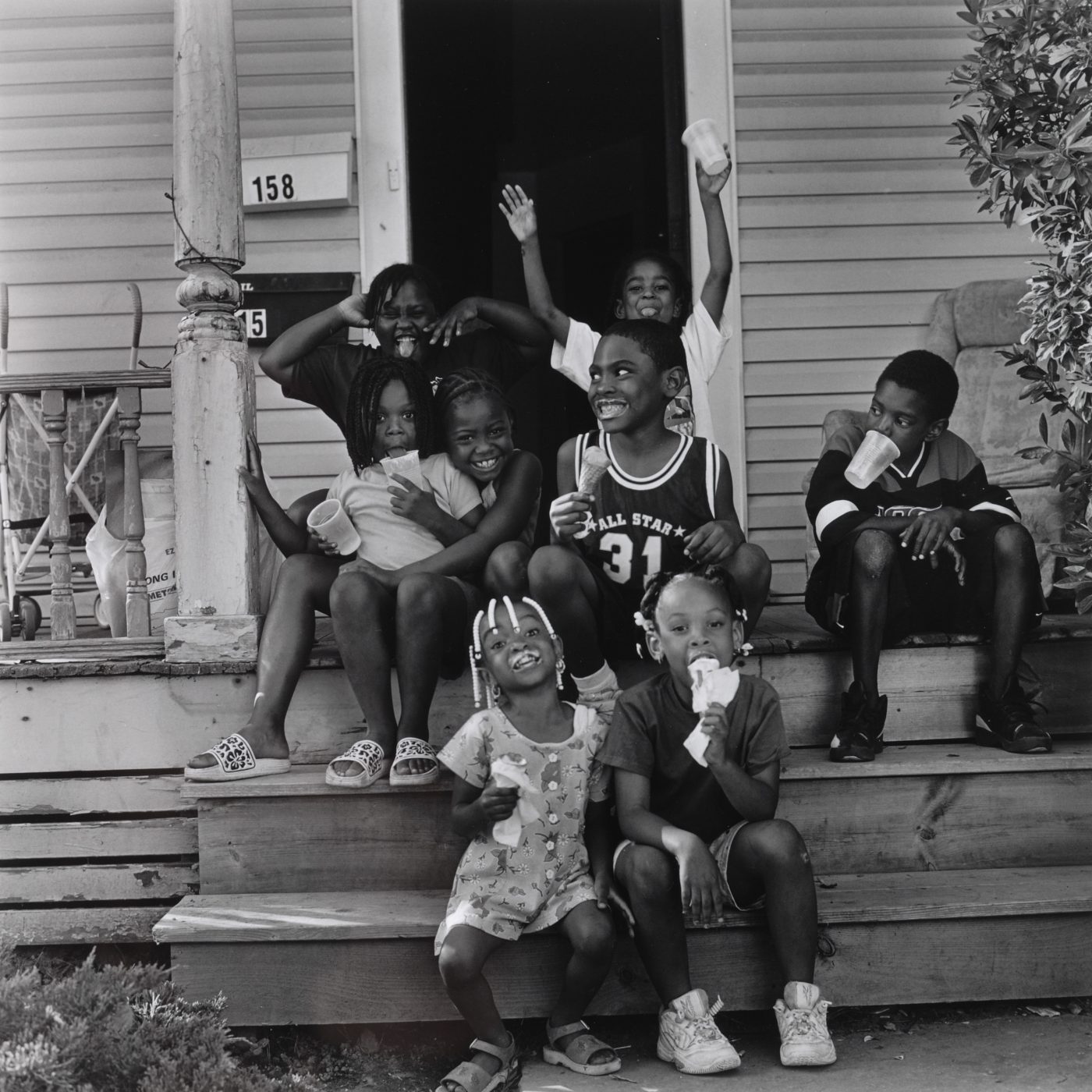Close to Home
Permanent Collection Installation
November 1, 2015–October 30, 2016
In images of our everyday surroundings—a clothesline, a fence, family and friends—these seven photographers evoke powerful feelings about home and the people and things that make up our lives. In an interview, Adam Bartos once defined solitude as the state where “nobody anywhere is waiting for you” and he has often been drawn to subjects that convey that sense of isolation. Ralph Gibson’s formal studies of architectural elements have the directness and simplicity of the humble objects they depict, as in the photograph of a picket fence, and he admits that he is “not terribly drawn towards the epic event. I’d like to make something totally insignificant into an object of importance.” Magnum photographer Eve Arnold was on assignment when she documented a migrant labor camp on Long Island in the 1950s. Alan MacWeeney’s abandoned school is a poignant reminder that buildings can play an important role in our emotional lives as well.
Photographer and filmmaker Larry Clark’s images of teenagers, best remembered from the 1995 film Kids, still have the ability to unsettle, and a moving narrative unfolds in Untitled (Note on Wall). Photographer Ralph Eugene Meatyard, an optician by trade, always called himself a “dedicated amateur.” He often posed his subjects in masks, which was his way of erasing the differences between people. Here he has seated his wife and three children in the bleachers of an abandoned ballpark, actors in a symbolic drama. Linda Alpern’s photograph of Tiffany and Greenport Friends, seated on the front steps of the house, captures a lively group of young children sitting on the front steps of a house, delighting in a summer moment that takes us back to the essence of “home.”


